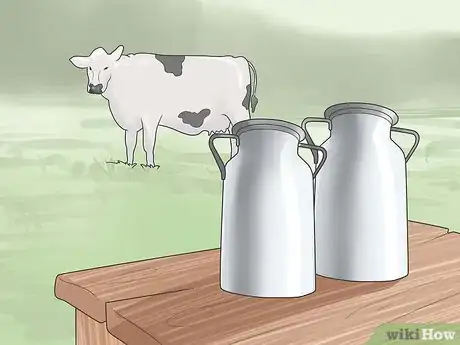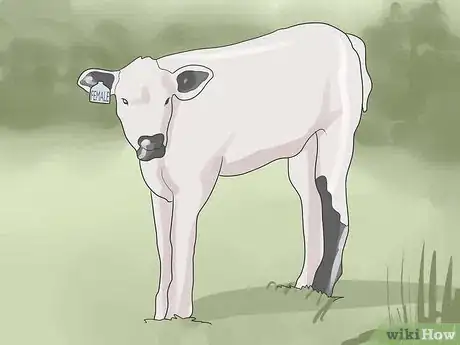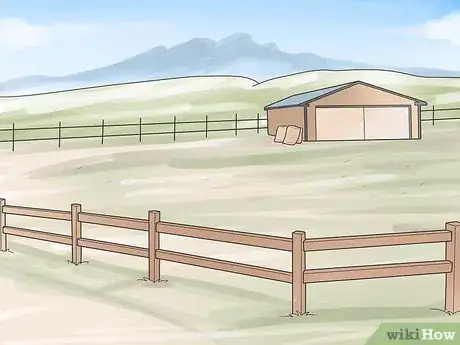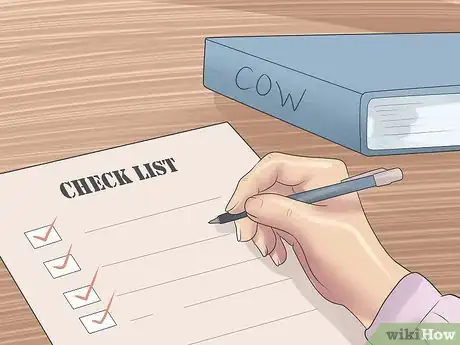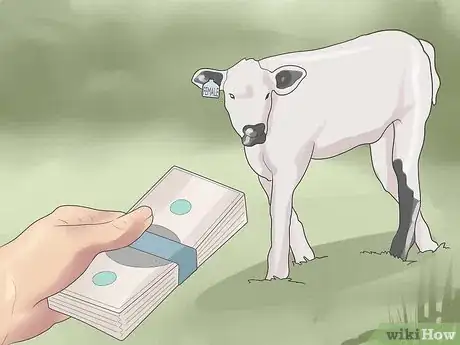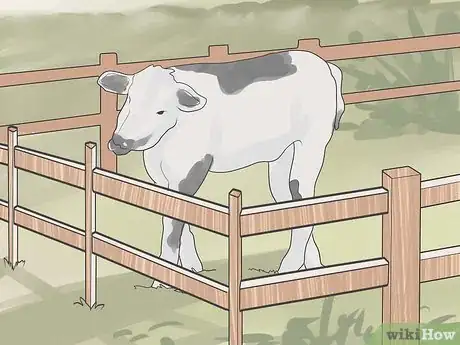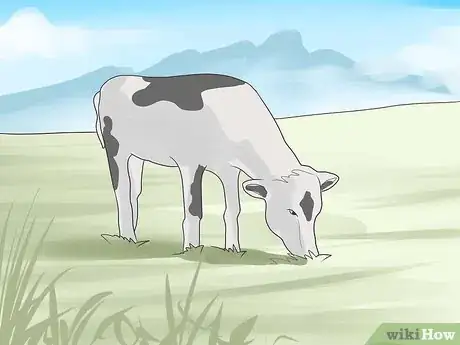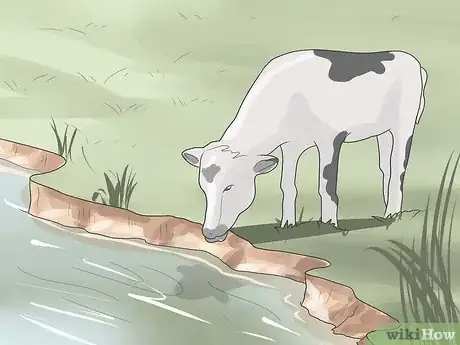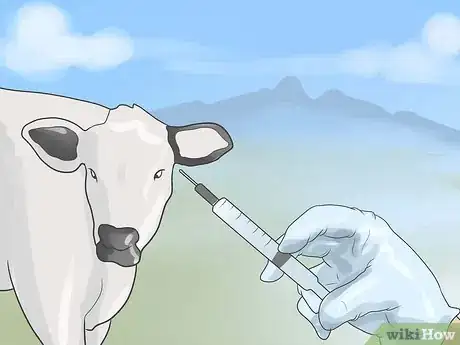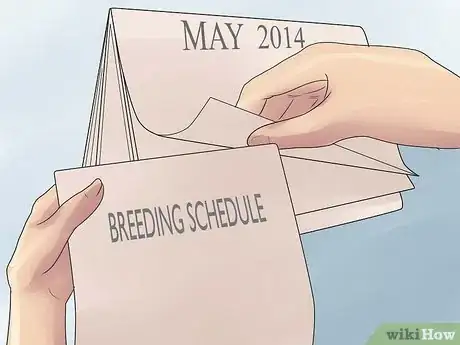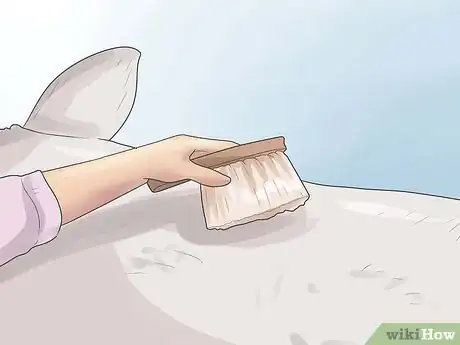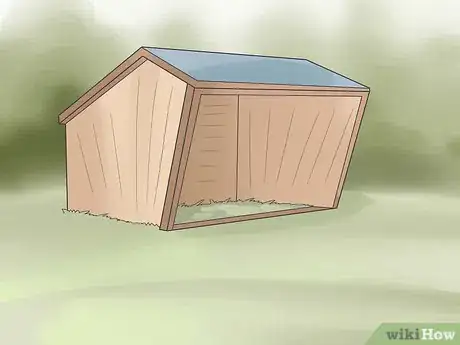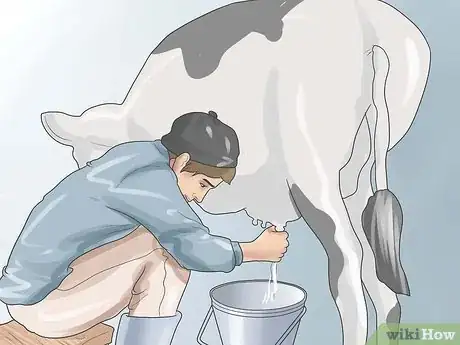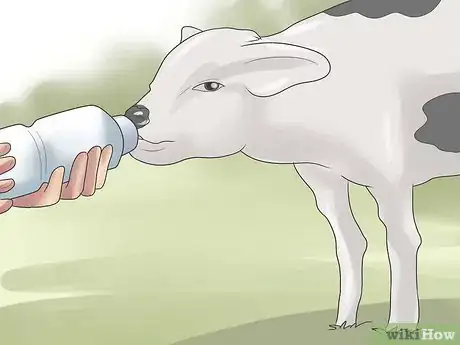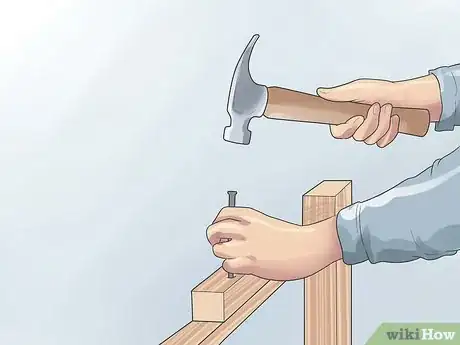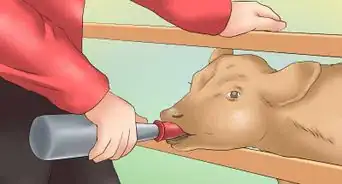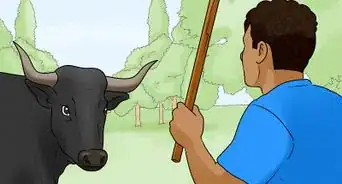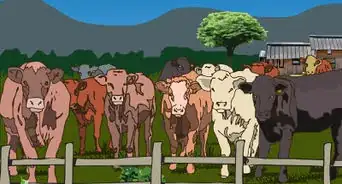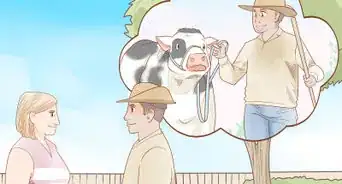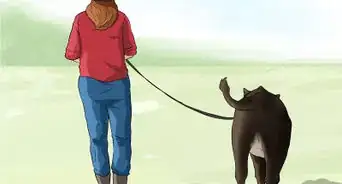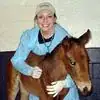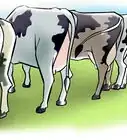This article was co-authored by Ryan Corrigan, LVT, VTS-EVN. Ryan Corrigan is a Licensed Veterinary Technician in California. She received her Bachelor of Science in Veterinary Technology from Purdue University in 2010. She is also a Member of the Academy of Equine Veterinary Nursing Technicians since 2011.
There are 7 references cited in this article, which can be found at the bottom of the page.
This article has been viewed 213,612 times.
Some cows are aggressive, some are friendly, and some just won't come near you at all. You might want one, though. Here is how to have and care for a pet cow. You do want one, right?
Steps
What To Do Before You Buy a Pet Cow
-
1Think about all the advantages and disadvantages of raising a cow. Raising a cow can be expensive, but some are friendly enough to be kept as pets. There is the upside of free milk, but that requires a bull or artificial insemination (AI). A bull is even more expensive to care for than just one cow alone and it can be dangerous. AI is used to breed most cows in North America and is relatively cheaper to have done on your cow than renting or buying a bull. AI is not an easy task to do though, as it requires an experienced and skilled technician to properly judge when and how a cow needs to be AI'd.
- Even if you want a cow to milk, they take up more feed than a beef cow does. You also need space to build a shed or barn to actually be able to milk the cow in!
- Cows take up space, require lots of feed to keep, and can make your yard or field a mess if they are kept there for most of their lives. Like horses, a cow needs space to move around and graze, and is not happy kept in one small area all the time. They cannot live in your house nor can they be confined to a small suburban lot.
- They also make a lot of manure, can get quite dirty, and even noisy when they're hungry or when they get in heat. They are also great escape artists (though not as much as a horse is), and are susceptible to a number of illnesses and diseases. Cows take a lot of care, it's not all about just putting it out to pasture and leaving her be!
-
2Consider about why you want or even need a cow. Do you want it for milking, for your freezer, or as a mere lawn ornament?Advertisement
-
3Consider what age, type or sex of bovine you wish to get. Base that decision on what your purpose is for getting a cow in the first place.
- If you want a milk cow, it's best to buy a cow that has been used at a dairy farm but is being sold because she is no longer productive to that dairy farmer.
- Try to avoid buying dairy calves, if you can. They take a lot more care than an older cow would, and death loss from bottle calves is much higher than if you bought a cow.
- If you want to buy a bovine for your freezer, buy a couple steers from a local farmer or rancher. Whether they're beef or dairy it doesn't matter, so long as you feed them well enough so they have enough meat you can get at slaughter.
- If you are wanting something that is merely a lawn ornament, consider getting a breed that takes less inputs than a regular cow would, such as one that is relatively disease-resistant, can do very well on grass alone, etc.
- If you want a milk cow, it's best to buy a cow that has been used at a dairy farm but is being sold because she is no longer productive to that dairy farmer.
-
4Analyze your area of residence to see if there are enough space to raise a pet cow. It is best if you have at least 5 to 10 acres to work with so that you have enough space to graze the cow and have separate areas for the animal to sleep, drink, be milked and eat.
-
5Buy, build or repair any fences, water areas and buildings.[1] Also make sure you purchase feed before you go and buy your animal.
- Building a shelter and purchasing feed before you buy your animal is much better than scrambling last-minute to buy feed and build a shelter before anything unpredictable happens, like some sort of storm or something that would make it harder to care for your pet bovine.
Selecting and Buying Your Pet
-
1Come prepared. Know what you are looking for, what questions you need to ask, those sort of things. You should have done so in the steps above.
- You should ask everything from health, breed, breeding, feeding, etc. before you consider buying.[2]
-
2Buy the animal when and if you are confident it is what you are looking for.
-
3When you get your new pet home, do not let it out onto the big open pasture right away. You need to confine your new pet to a small pen for several days to a week to get it used to its new surroundings.
- If you let your new pet out into the big corral right away it will test the fence to see if it can escape and get back home. You do not want that, so you need to keep it confined for a little while.
Caring for your Pet
-
1Make sure it has feed and/or fresh pasture every day. Be careful about letting feed go to waste, as wastage means that you need to spend more on feed. Once a cow learns that she will get feed after she's eaten half of the bale, it'll be harder to get her to clean up after herself.
- Do not overgraze a pasture, nor let it be too under-grazed. This is important if you want to maintain pasture health in order to maintain the animal's health.
- See How to Feed Cattle for more information on proper feed and feed management for your cow.
-
2Provide access to fresh water and loose mineral at all times. Having a good mineral program will keep your animal healthy and productive, and will also help keep a healthy immune system.
-
3Have a good health program for your pet bovine. Cows are like pet cats and dogs: they can get sick too, and need to be vaccinated once or twice a year. See your local large animal veterinarian for the best vaccines to give your cow according to your area.
-
4If you have bought a female that you want to get milk from or give birth to a calf, set up a breeding schedule for her. This means deciding when to breed her, when she can calve, and when that calf should be weaned and/or sold. See How to How to Breed Dairy Cattle and How to Breed Beef Cattle for more information.
-
5Groom your bovine every day.[3] This is optional of course, as most cattle that are kept on farms and ranches or even as pets are not groomed. Cattle are not horses, and will do just fine without a brush. Your bovine may be too shy to let you near to brush it anyway.
-
6Make sure your pet always has access to some form of shelter. Don't be disappointed if your pet cow doesn't head for your newly built shelter if it starts raining. Cattle will make use of any shelter available during inclement weather, whether it be the side of a building, or in a grove of trees.
-
7If it's a milk cow you love, milk her on a regular schedule.[4] It's best if you milk her in the morning and/or in the afternoon, so that she has time to eat during the day before her next milking.
-
8If it's a calf you have bought and are bottle feeding it, make sure it gets the proper milk replacer formula and amount per day. A calf needs 10% of its body weight in milk per day, and this should be split in two or three feedings per day.
-
9
Expert Q&A
Did you know you can get expert answers for this article?
Unlock expert answers by supporting wikiHow
-
QuestionCan you have a cow if you don't live on a farm?
 Ryan Corrigan, LVT, VTS-EVNRyan Corrigan is a Licensed Veterinary Technician in California. She received her Bachelor of Science in Veterinary Technology from Purdue University in 2010. She is also a Member of the Academy of Equine Veterinary Nursing Technicians since 2011.
Ryan Corrigan, LVT, VTS-EVNRyan Corrigan is a Licensed Veterinary Technician in California. She received her Bachelor of Science in Veterinary Technology from Purdue University in 2010. She is also a Member of the Academy of Equine Veterinary Nursing Technicians since 2011.
Licensed Veterinary Technician
Warnings
- Do not buy a cow if you do not have the room to even raise one! As was mentioned above, raising a cow requires plenty of space, and a little lot is not sufficient to raise a cow in.⧼thumbs_response⧽
- Avoid getting animals that look sick or unhealthy, because you will have a lot of vet bills to pay and may even risk losing that animal.⧼thumbs_response⧽
- Do not get buy an animal on a whim. You need to ask questions and do your research first before you ask or request to purchase that animal.⧼thumbs_response⧽
- Never underestimate the strength and speed of a bovine. Cattle are bigger, heavier, stronger and faster than you. They can kick, buck and run, and if you have ended up with an aggressive animal, trample you.⧼thumbs_response⧽
References
- ↑ https://www.popularmechanics.com/technology/a21189/how-to-build-a-fence/
- ↑ https://www.farmsanctuary.org/wp-content/uploads/2012/06/Animal-Care-Cattle.pdf
- ↑ https://afs.ca.uky.edu/dairy/brushing-dairy-cow-brushes
- ↑ https://www.artofmanliness.com/articles/how-to-milk-a-cow/
- ↑ https://images.homedepot-static.com/catalog/pdfImages/37/378efcc0-72cc-4a10-b9e3-c9eb86029f66.pdf
- https://www.hobbyfarms.com/have-a-cow-3/
- https://animals.mom.me/raising-calves-pets-2706.html
About This Article
If you’re thinking about getting a pet cow, first consider the advantages and disadvantages of owning one, like all the space you’ll need to keep one or the amount of manure you’ll have to deal with. Another important consideration is the type of cow you want to get, like a dairy cow for milking or a steer for beef. If a cow seems right for you, check your home to make sure you have at least 5 to 10 acres for the cow to live and graze in and make you’ll be able to give it plenty of food, water, and minerals to keep it healthy and productive. For more tips on how to have a pet cow, like why you shouldn’t buy a dairy calf, read on!

